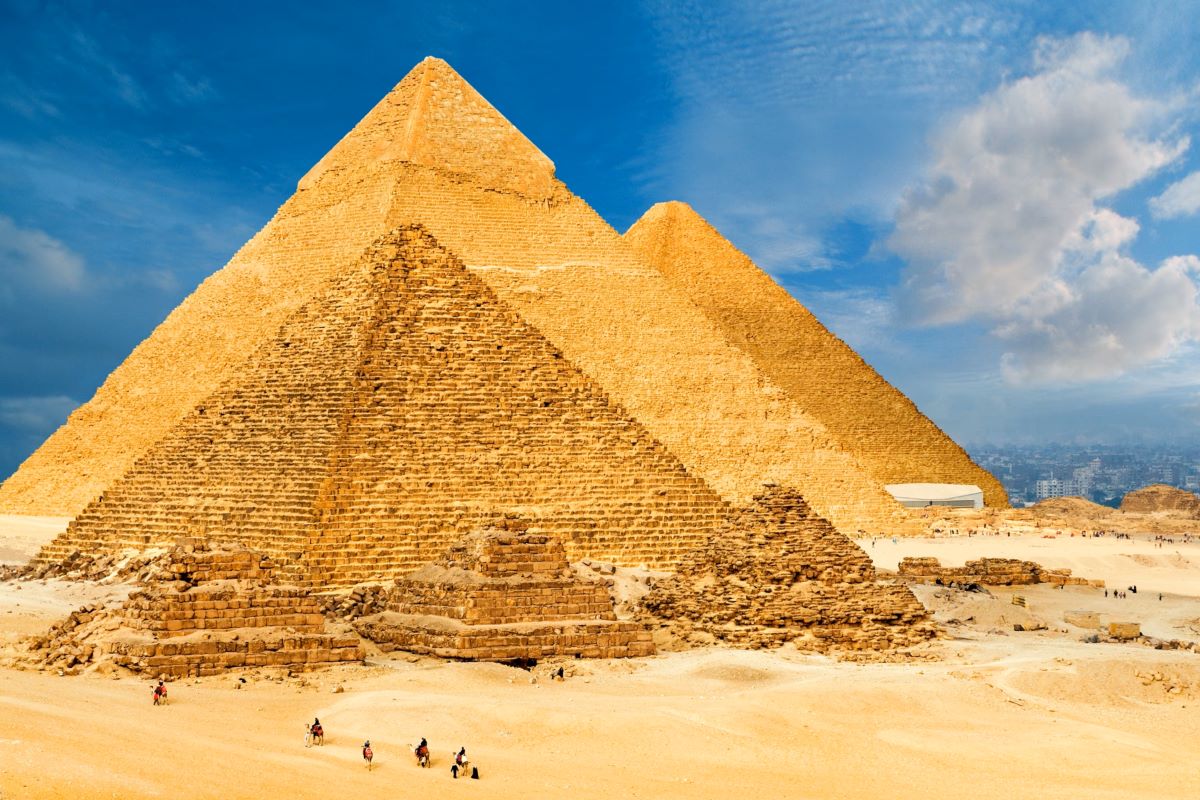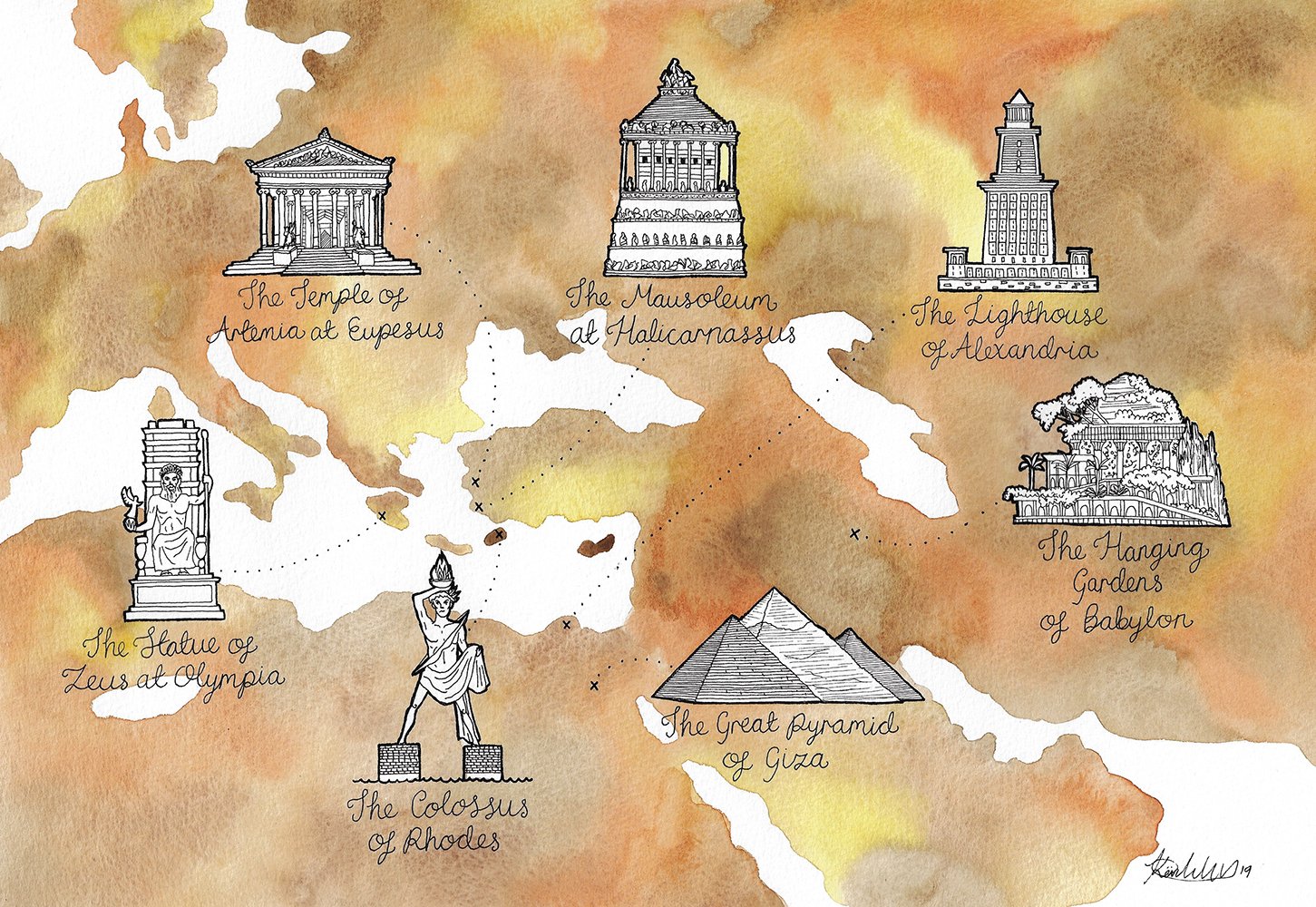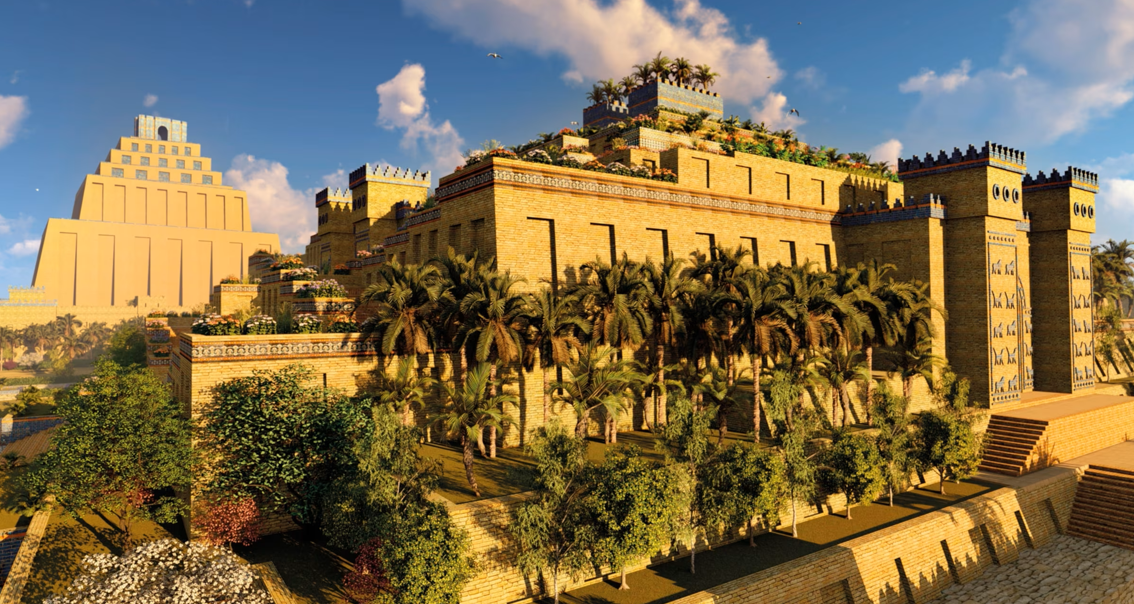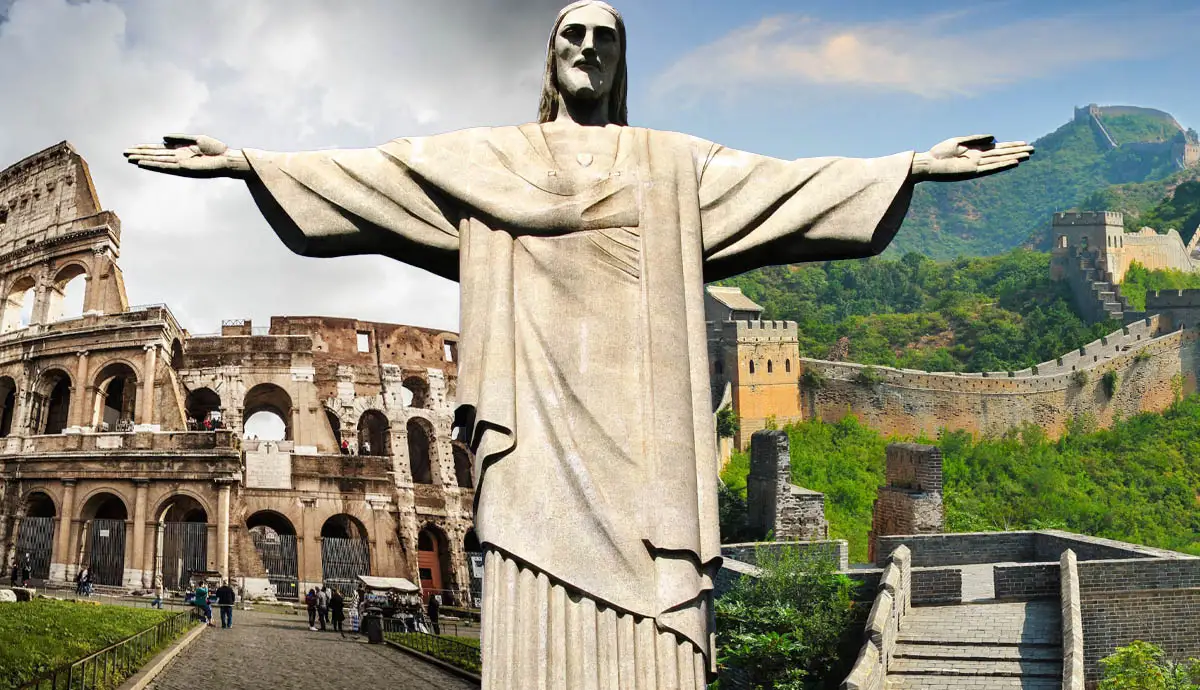The Seven Wonders of the World, with their grandeur and aesthetic impact, have always captured the attention of travelers and explorers, whether they sought adventures in antiquity or in modern times. In this article, we will delve into the historical and cultural context to explore both ancient and modern interpretations of these magnificent places.
Under the guidance of Egemen Mustafa Sener, an experienced traveler and blogger, we will embark on an exciting journey that will allow us to understand the significance and grandeur of the Seven Wonders of the World in different eras and locations of our planet.
Ancient wonders of the world

Source: nationalgeographic.com
Our journey begins in ancient Egypt, my fellow adventurers, a land rich with history and mystery, where we encounter one of the most iconic marvels of the ancient world: the Pyramids of Giza. These colossal structures, rising proudly from the desert sands, have captured the imagination of people for centuries. Standing as silent witnesses to the passage of time, they continue to awe and inspire all who behold them. Join me, Egemen Mustafa Sener, as we delve into the secrets of these ancient wonders and unlock the mysteries of the past.
As we stand in their presence, we cannot help but marvel at the sheer scale and precision of their construction. Built over thousands of years ago, using rudimentary tools and techniques, the Pyramids of Giza remain a testament to the ingenuity and craftsmanship of the ancient Egyptians. Each block meticulously placed, each angle carefully calculated, they stand as monuments to human ambition and determination.
But beyond their impressive exterior lies a wealth of history and symbolism waiting to be uncovered. We will delve into the rich tapestry of ancient Egyptian civilization, exploring the beliefs, rituals, and customs that gave rise to these magnificent structures. From the pharaohs who commissioned their construction to the skilled craftsmen who labored tirelessly to bring their visions to life, we will unravel the mysteries of the pyramids and the people who built them.
Yet, despite centuries of study and exploration, the origins of the pyramids remain shrouded in mystery. From the theories of alien intervention to the more plausible explanations of ancient engineering techniques, we will examine the various hypotheses surrounding their construction. Each theory offers its own insights into the ingenuity and resourcefulness of the ancient Egyptians, adding another layer of intrigue to these timeless monuments.

Source: culturefrontier.com
In our exploration of the Pyramids of Giza, we will not only uncover the secrets of their past but also gain a deeper appreciation for the enduring legacy of ancient Egypt. As we stand in the shadow of these majestic structures, we are reminded of the power of human ambition, the resilience of the human spirit, and the timeless allure of the ancient world.
Next on our itinerary is a voyage to ancient Babylon, where we’ll delve deep into the captivating legends surrounding the Hanging Gardens of Babylon. These gardens, often described as one of the Seven Wonders of the Ancient World, have long been a subject of fascination and intrigue.
Legend has it that the gardens were built by King Nebuchadnezzar II for his wife, Queen Amytis, who longed for the lush greenery of her homeland. The gardens were said to be an extraordinary feat of engineering, with lush vegetation cascading from terraces and elaborate irrigation systems keeping the plants hydrated in the arid Mesopotamian climate.
However, despite their legendary status, the actual existence of the Hanging Gardens has been a topic of debate among historians and archaeologists. While some ancient texts and accounts describe the gardens in vivid detail, there is limited archaeological evidence to support their existence.
Nevertheless, archaeological excavations in the vicinity of ancient Babylon have revealed evidence of sophisticated irrigation systems and garden complexes, suggesting that there may indeed have been gardens of considerable grandeur in the region.
Throughout our journey, we will examine the various theories and interpretations put forth by scholars in an attempt to unravel the mystery of the Hanging Gardens of Babylon. From exploring ancient texts and inscriptions to analyzing archaeological discoveries, we will seek to uncover the truth behind one of antiquity’s most enduring enigmas.

Source: nationalgeographic.com
Finally, our voyage culminates in Greece, a land steeped in myth and legend, where we will unravel the captivating history and cultural significance of the Temple of Artemis in Ephesus. This monumental edifice, counted among the Seven Wonders of the Ancient World, stood as a testament to the prowess and elegance of ancient Greek civilization.
The Temple of Artemis, dedicated to the goddess of the hunt, wilderness, and childbirth, was a marvel of architectural ingenuity and religious devotion. Its construction spanned several centuries, with successive rulers and civilizations contributing to its grandeur. The temple’s colossal size and intricate design made it a focal point of worship and pilgrimage for countless devotees from across the ancient world.
Beyond its architectural splendor, the Temple of Artemis held profound cultural significance for the ancient Greeks. As a symbol of their reverence for the divine and their commitment to artistic and intellectual pursuits, it embodied the ideals of Greek civilization. Its magnificence echoed throughout the ancient world, inspiring awe and admiration in all who beheld it.
Yet, like many wonders of antiquity, the Temple of Artemis eventually succumbed to the ravages of time and human conflict. Today, only fragments and ruins remain, serving as poignant reminders of its former glory. Nevertheless, its legacy endures, immortalized in art, literature, and the collective memory of humankind.
As we stand in the shadow of this once-majestic temple, we are transported back in time to an era of gods and heroes, where the boundaries between myth and reality blur. Join me, Egemen Mustafa Sener, as we explore the mysteries and marvels of the Temple of Artemis and uncover the enduring legacy of ancient Greece.
New wonders of the world

Source: bestproducts.com
Venturing into the contemporary landscape, we set our sights on the marvels of the modern world, embarking on our journey with a visit to the majestic Christ the Redeemer statue in Rio de Janeiro. Perched atop the Corcovado mountain, this towering monument stands as a beacon of faith and a cultural icon of Brazil. With outstretched arms embracing the city below, the statue exudes a sense of serenity and magnificence that captivates visitors from around the globe.
Constructed between 1922 and 1931, the Christ the Redeemer statue has become synonymous with Rio de Janeiro and Brazilian identity. Rising to a height of 30 meters (98 feet), and with a wingspan of 28 meters (92 feet), the statue is an engineering marvel, crafted from reinforced concrete and soapstone. Its location atop the 710-meter (2,330-foot) Corcovado mountain offers panoramic views of the city, making it a popular destination for tourists and pilgrims alike.
Beyond its sheer size and architectural prowess, the Christ the Redeemer statue holds profound cultural and religious significance. As a representation of Jesus Christ with open arms, it serves as a symbol of peace, love, and unity. Many visitors are drawn to the statue not only for its breathtaking beauty but also for the spiritual experience it offers.
Each year, millions of tourists flock to Rio de Janeiro to behold this iconic monument up close, marveling at its grandeur and the panoramic vistas it affords. Whether bathed in the golden light of sunrise or illuminated against the backdrop of a vibrant cityscape at night, the Christ the Redeemer statue never fails to inspire awe and wonder.
As we stand in its presence, we are reminded of the enduring power of human creativity and devotion, and the ability of architectural wonders to transcend time and space. Join us as we continue our exploration of the new wonders of the world, uncovering the stories and significance behind these extraordinary feats of human ingenuity.
Afterward, our journey takes us into the depths of Chinese history as we embark on an exploration of the Great Wall of China. This monumental defensive fortification, often hailed as one of the greatest architectural achievements in human history, stretches over thousands of kilometers across the northern borders of China.
The Great Wall’s construction began as early as the 7th century BC and continued for centuries, with various dynasties contributing to its expansion and reinforcement. Initially built as a means of defense against invading nomadic tribes from the north, the wall evolved over time to serve multiple purposes, including border control, regulation of trade, and the facilitation of transportation and communication.
One of the most striking aspects of the Great Wall is its sheer scale and magnitude. Stretching across rugged mountains, vast plains, and desolate deserts, the wall features imposing watchtowers, battlements, and fortresses strategically positioned along its length. Its construction involved an immense amount of labor and resources, with millions of workers involved in its building and maintenance over the centuries.

Source: thecollector.com
Beyond its formidable appearance, the Great Wall holds immense historical and cultural significance for China and the world. As a symbol of Chinese civilization’s resilience and determination to defend its borders, it has come to represent national pride and identity. Moreover, it serves as a tangible reminder of China’s rich cultural heritage and its contributions to human civilization.
Today, the Great Wall stands as a UNESCO World Heritage Site and one of the most iconic landmarks in the world, attracting millions of visitors annually. As we traverse its ancient ramparts and contemplate its storied past, we are transported back in time to an era of emperors, warriors, and dynasties. Join us as we uncover the secrets and marvels of this extraordinary architectural wonder, a testament to the ingenuity and perseverance of the human spirit.
As our adventure draws to a close, we find ourselves in Petra, the captivating ancient city nestled in the desert landscapes of Jordan. Petra, also known as the “Rose City” due to the color of the stone from which it is carved, is celebrated worldwide for its extraordinary architectural marvels and rich historical heritage.
Founded by the Nabateans around the 6th century BC, Petra flourished as a major trading hub and capital of the Nabatean Kingdom. Its strategic location along ancient trade routes brought wealth and prosperity to the city, leading to the construction of remarkable structures carved directly into the sandstone cliffs.

Source: tripsavvy.com
ne of Petra’s most iconic landmarks is the Treasury (Al-Khazneh), a magnificent temple facade adorned with intricate carvings and columns. This breathtaking monument, immortalized in popular culture by films such as “Indiana Jones and the Last Crusade,” serves as a testament to the architectural prowess and artistic sophistication of the Nabateans.
Beyond the Treasury, Petra boasts a wealth of archaeological wonders, including the Monastery (Ad Deir), the Royal Tombs, and the Roman Theater, each offering a glimpse into the city’s vibrant past and multicultural influences.
Petra’s cultural and historical significance extends far beyond its architectural splendor. As a UNESCO World Heritage Site, it serves as a tangible link to the ancient civilizations that once thrived in the region, showcasing their achievements and legacy to the world.
In addition to its historical allure, Petra holds a special appeal for modern travelers seeking to immerse themselves in the mysteries of the past. Its remote location and stunning natural beauty, characterized by towering cliffs and winding canyons, make it a bucket-list destination for adventurers and history enthusiasts alike.
As we bid farewell to Petra, we carry with us memories of its awe-inspiring beauty and the echoes of its storied past. Our journey may be coming to an end, but the legacy of Petra lives on, inspiring wonder and fascination in all who are fortunate enough to experience its magic.
The Seven Wonders of the World, both ancient and modern, continue to inspire and astonish us with their magnificence and beauty. As Egemen Mustafa Sener, I sincerely hope that this journey into the world of their history and significance will leave you with unforgettable impressions and may inspire you to embark on your own adventures.





